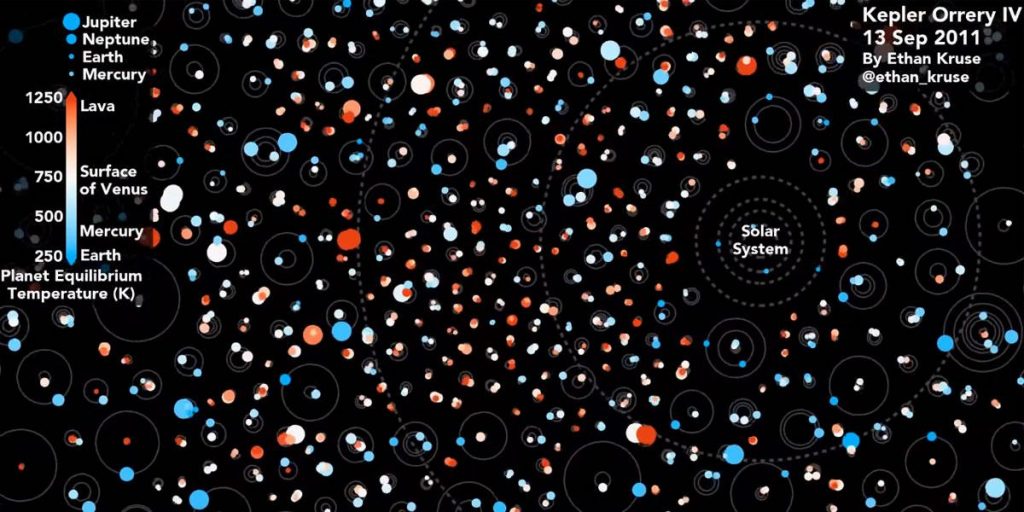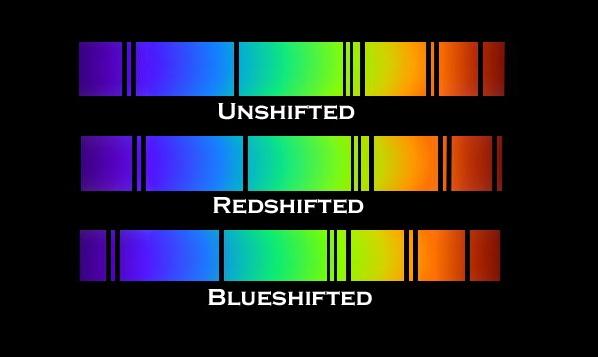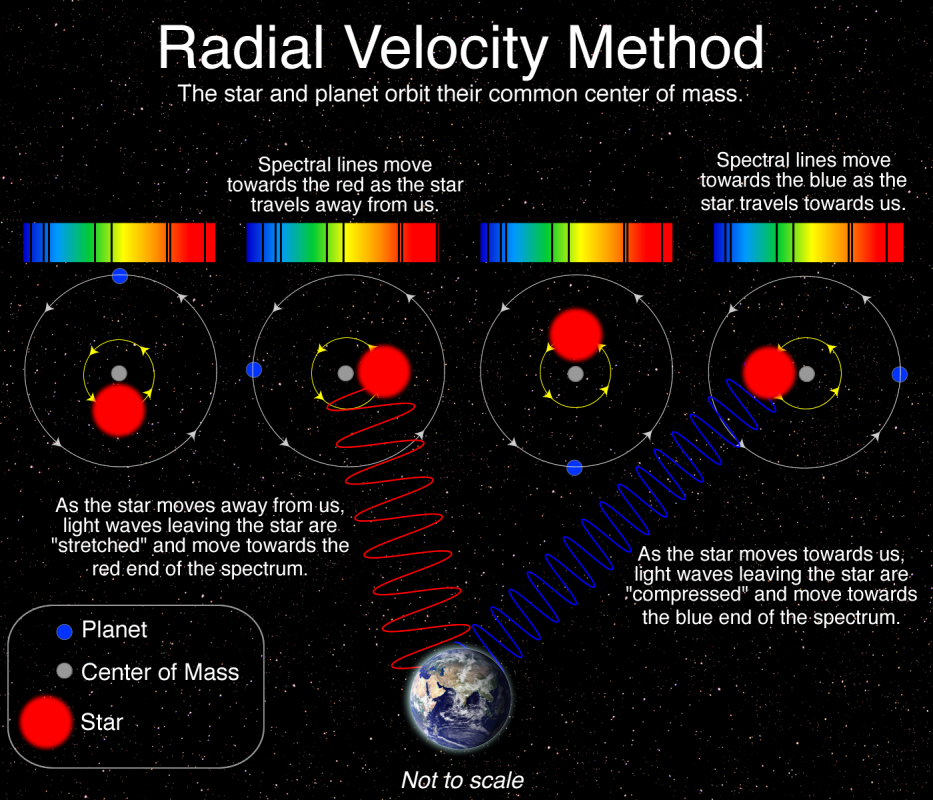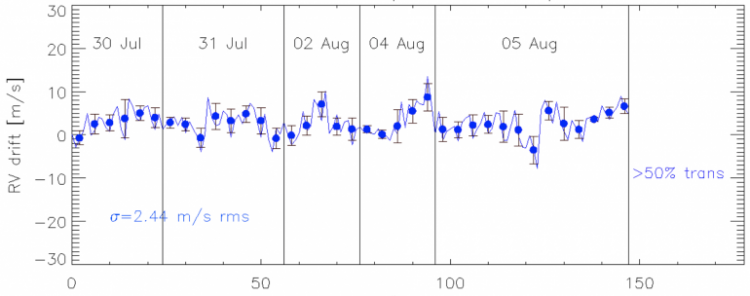2019 January: Hunting exoplanets with SPIRou
SPIRou reaches 2 m/s velocimetric precision
Among the extensive tests carried out with SPIRou throughout 2018, the most demanding experiment was to demonstrate that SPIRou is capable of detecting the periodic motions of stars hosting exoplanets.

If a star is found to exhibit a very regular back and forth motion with respect to the observer, one can conclude that it is orbited by other celestial bodies, whose masses and distances from the star can be inferred from how much and how fast the velocity of the star changes with time.
In practice, SPIRou works as a speed radar and uses the Doppler to measure the velocity of stars and their variations with time. These velocity variations can be as small as 1-2 m/s, i.e. the typical speed of a walking person, for an Earth-like planet orbiting a red dwarf at a distance where liquid water can pool at the surface of the planet (the so-called habitable zone). Such velocity changes translate into tiny color shifts of the stellar spectrum of order of one thousandth of a pixel on the SPIRou detector that SPIRou needs to reliably diagnose for detecting the planet and for measuring its mass.
To be able to reach such a high level of velocity precision, the SPIRou spectrograph needs to be hyper-stable, and thermally regulated to better than 0.001°C to ensure that tiny velocity signals from distant exoplanets are not drowned into shifts resulting from thermal fluctuations in the instrument.
Tests in the lab using a reference light source demonstrated that SPIRou is indeed very stable, with an instrumental velocity jitter of order 0.2 m/s. On-sky observations are an even harder challenge for planet hunters as velocity measurements are also affected by the Earth’s variable atmosphere, especially in the infrared where the red dwarfs that SPIRou will scrutinize emit most of their light. With several runs of on-sky observations on a few nearby stars, SPIRou demonstrated to be able to measure velocities of stars at a precision of about 2 m/s, with the main limitation currently being the presence (and not yet perfect correction) of variable absorption lines from the Earth’s atmosphere plaguing stellar spectra. With more observations and a better correction of the lines from Earth’s atmosphere, the velocity precision of SPIRou is expected to further improve, up to the nominal level of ~1 m/s.
This performance currently makes SPIRou one of the most, if not the most, precise infrared velocimeter worldwide, hence the decision to initiate SPIRou’s exploration of planetary systems around nearby red dwarfs, the closest neighbors of our own Solar System.
Stay tuned to learn more about the new worlds that SPIRou is about to unveil in its celestial quest!





